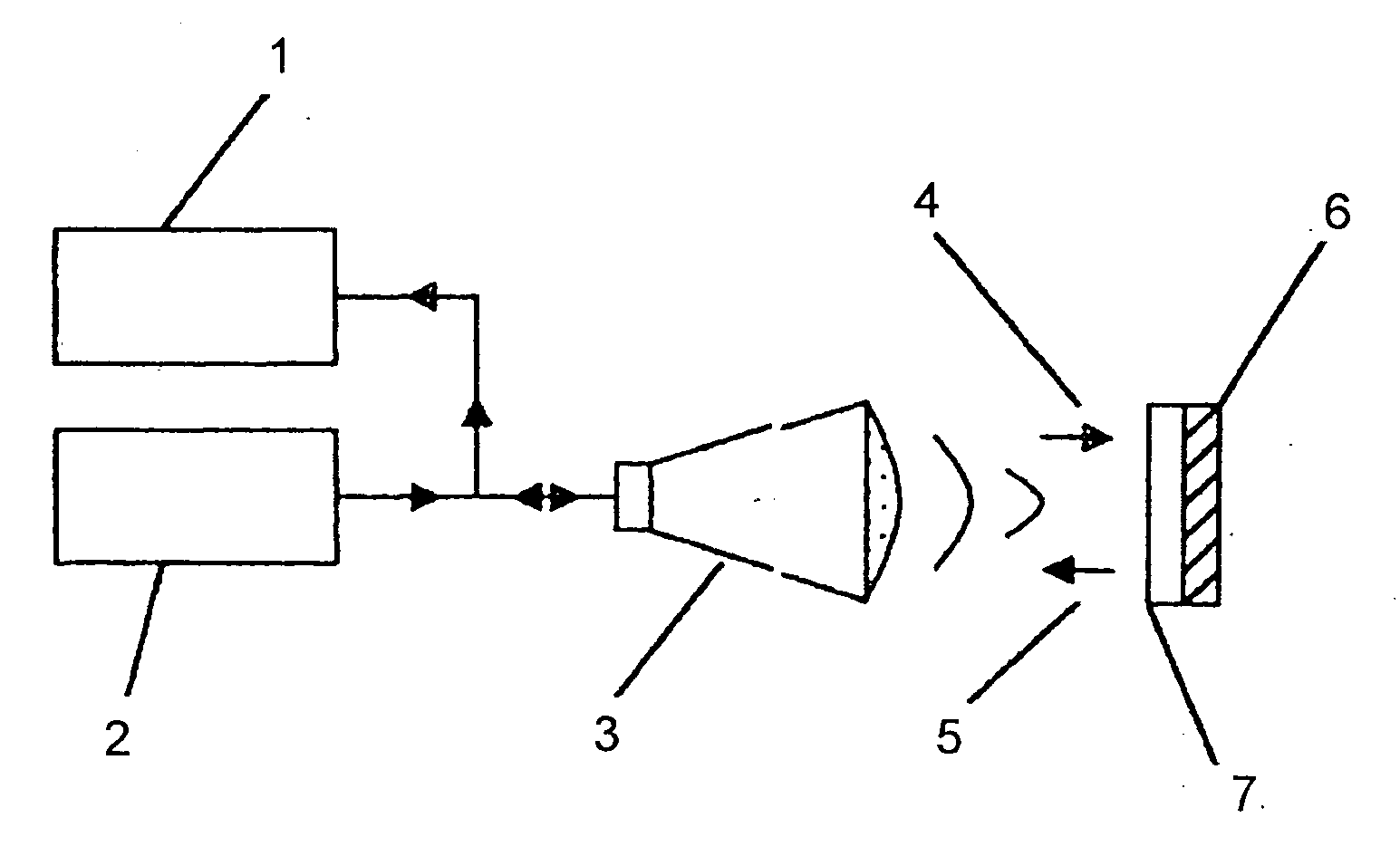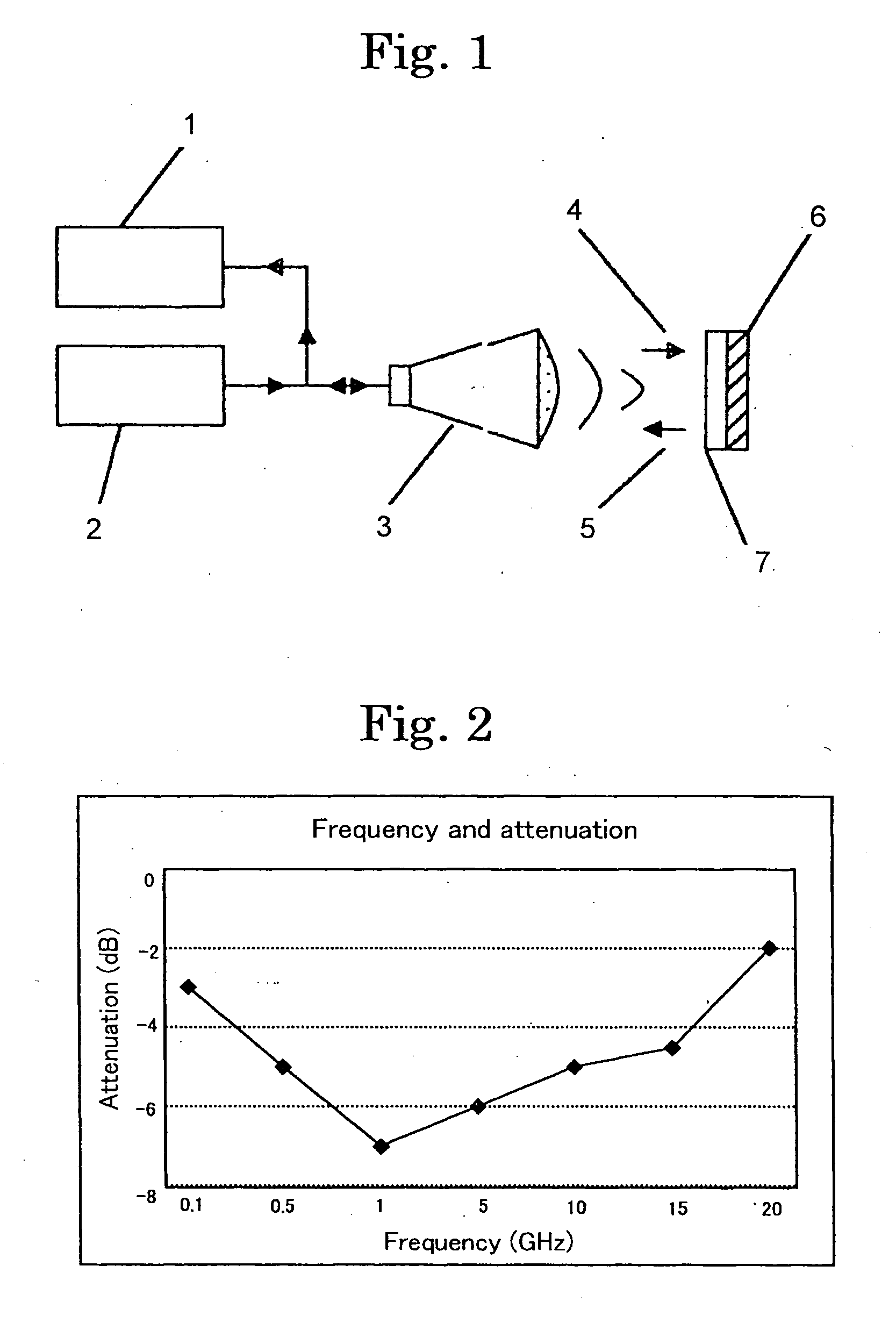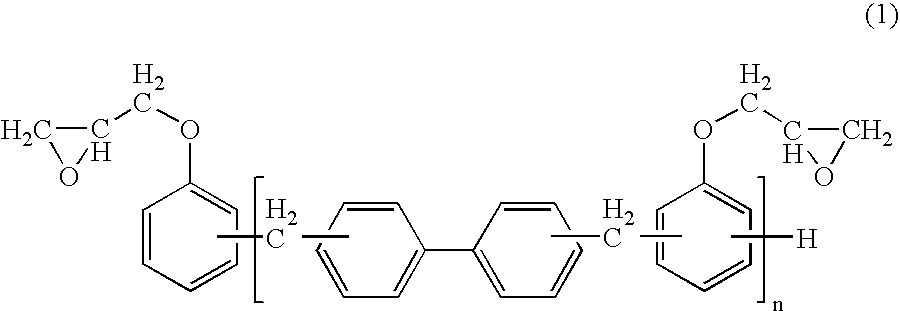Epoxy Resin Composition
a technology of epoxy resin and composition, which is applied in the direction of solid-state devices, metal-layered products, electrical equipment, etc., can solve the problems of increasing the dielectric loss tangent, epoxy resins are not suitable for printed wiring boards, and the electrical properties of epoxy resins are likely to be affected, so as to achieve low dielectric constant and low dielectric loss tangent , the effect of low dielectric loss
Inactive Publication Date: 2008-01-24
NAMICS CORPORATION
View PDF7 Cites 25 Cited by
- Summary
- Abstract
- Description
- Claims
- Application Information
AI Technical Summary
Benefits of technology
The present invention relates to an epoxy resin composition that can form a cured material with low dielectric loss tangent in a radio frequency region (1 to 5 GHz) and a film obtained by using the epoxy resin composition. The composition has excellent processability and can be advantageously used as a material for printed wiring boards to reduce the thickness of the board and increase the density of circuit parts. The film has low dielectric loss tangent and good physical and electrical properties. The invention also addresses the problem of reducing the thickness of the adhesive layer in printed wiring boards without sacrificing their physical and electrical properties. Additionally, the invention provides a solution for improving the heat radiation properties of the resin used in a base film or interlayer dielectric film to increase the reliability of electronic devices.
Problems solved by technology
However, in a higher frequency region than the region conventionally employed, for example, in a frequency region as high as 1 to 5 GHz, the epoxy resins are likely to lower in electrical properties, namely, increase in dielectric loss tangent.
Therefore, such epoxy resins are not suitable for materials for printed wiring boards, which will be used in a radio frequency region that particularly requires a low dielectric loss tangent.
However, the techniques have a problem in that a cured material of the epoxy resin in the form of a film is extremely difficult to obtain.
Specifically, there are pointed out the following problems: 1) the resin composition undergoes cohesion during the operation for forming a film, making it difficult to obtain a uniform film; 2) air bubbles are generated during the operation for forming a film, causing pores in a pinhole form in the film; 3) even when a film can be formed, in curing the raw film under predetermined curing conditions, dissolution of the resin is likely to cause the film to suffer cohesion, lowering the properties of the film; and 4) the raw film as a uniform film may be difficult to release from a support PET film with appropriate releasability and apply to an object.
On the other hand, in accordance with the increase of component mounting density, problems of heat radiation properties of the resin used in a base film or interlayer dielectric film arise.
For example, when a resin film having poor heat radiation properties is used, heat is stored in the resin to lower the reliability of the electronic device.
However, such resin compositions have a problem in that the processability is too poor to form a thin film (having a thickness of, e.g., 200 μm or less) exhibiting both desired thermal conductivity and desired insulating properties.
Method used
the structure of the environmentally friendly knitted fabric provided by the present invention; figure 2 Flow chart of the yarn wrapping machine for environmentally friendly knitted fabrics and storage devices; image 3 Is the parameter map of the yarn covering machine
View moreImage
Smart Image Click on the blue labels to locate them in the text.
Smart ImageViewing Examples
Examples
Experimental program
Comparison scheme
Effect test
examples
[0084] Hereinbelow, the present invention will be described in more detail with reference to the following Examples, which should not be construed as limiting the scope of the present invention. In the following Examples, “part(s)” representing the unit of the amount of the component is given by weight unless otherwise specified.
the structure of the environmentally friendly knitted fabric provided by the present invention; figure 2 Flow chart of the yarn wrapping machine for environmentally friendly knitted fabrics and storage devices; image 3 Is the parameter map of the yarn covering machine
Login to View More PUM
| Property | Measurement | Unit |
|---|---|---|
| frequency | aaaaa | aaaaa |
| dielectric constant | aaaaa | aaaaa |
| dielectric constant | aaaaa | aaaaa |
Login to View More
Abstract
To provide an epoxy resin composition which can form a cured material having low dielectric constant and low dielectric loss tangent in a radio frequency region, and a film obtained by using the epoxy resin composition. An epoxy resin composition comprising: (A) at least one epoxy resin selected from the group consisting of a novolac epoxy resin having a phenolic skeleton and a biphenyl skeleton, and a bifunctional linear epoxy resin having a weight average molecular weight of 10,000 to 200,000 and having a hydroxyl group; and (B) a modified phenolic novolac having a phenolic hydroxyl group, at least part of which is esterified with a fatty acid.
Description
FIELD OF THE INVENTION [0001] The present invention relates to an epoxy resin composition which can form a cured material having low dielectric loss tangent in a radio frequency region, and a film obtained by using the epoxy resin composition. In addition, the present invention is concerned with the epoxy resin composition containing inorganic filler, which can form a cured material having desired electrical and physical properties imparted by the inorganic filler, and a film obtained by using the epoxy resin composition. BACKGROUND ART [0002] In current highly information-oriented society, as typically seen in portable phones, for achieving rapid transmission of information with a large capacity, the frequency used for the information transmission is being increased. For dealing with the increased frequency, in printed wiring boards and module substrates used in electronic devices including information terminal devices, it is necessary to use materials having such a low dielectric ...
Claims
the structure of the environmentally friendly knitted fabric provided by the present invention; figure 2 Flow chart of the yarn wrapping machine for environmentally friendly knitted fabrics and storage devices; image 3 Is the parameter map of the yarn covering machine
Login to View More Application Information
Patent Timeline
 Login to View More
Login to View More Patent Type & Authority Applications(United States)
IPC IPC(8): C08G59/62B32B15/092H01L23/14H01L23/498H05K1/03
CPCC08G59/621H01L23/49894H05K1/0326Y10T428/12569H01L2924/0002H05K2201/0358H01L2924/00C08L63/10C08G59/62C08L63/00
Inventor YAMADA, TOSHIAKIFUJINO, TAKUTERAKI, SHINYOSHIDA, MASAKISUZUKI, KENICHISUZUKI, TADAKO
Owner NAMICS CORPORATION
Features
- R&D
- Intellectual Property
- Life Sciences
- Materials
- Tech Scout
Why Patsnap Eureka
- Unparalleled Data Quality
- Higher Quality Content
- 60% Fewer Hallucinations
Social media
Patsnap Eureka Blog
Learn More Browse by: Latest US Patents, China's latest patents, Technical Efficacy Thesaurus, Application Domain, Technology Topic, Popular Technical Reports.
© 2025 PatSnap. All rights reserved.Legal|Privacy policy|Modern Slavery Act Transparency Statement|Sitemap|About US| Contact US: help@patsnap.com



